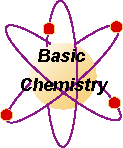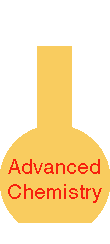Molarity Lab
PURPOSE:
In this lab you will use solutions of hydrochloric acid and sodium hydroxide. You will then titrate the sodium hydroxide into the hydrochloric acid until the indicator color remains after swirling the solution. From the known concentration of the sodium hydroxide you can determine the unknown concentration of the hydrochloric acid.
PROCEDURE:
- Read the MSDS sheets for safety precautions and disposal of chemicals.
- Make up the sodium hydroxide (NaOH) solution to a known concentration (probably 1 mole).
- Put 10 ml of hydrochloric acid (HCl) with an unknown molarity into a 50 ml beaker. Add several drops of indicator--I like universal indicator.
- Fill a buret with the 1 mole sodium hydroxide (NaOH). Run about 5 ml out into an empty beaker and discard according to teacher's directions.
- Record the level of the sodium hydroxide (NaOH) solution in the buret.
- Titrate or slowly add the sodium hydroxide (NaOH) to the acid-indicator solution until the solution turns green. Remember to check by swirling.
- Use a boiling water bath to evaporate most of the water off the solution from the 50 ml beaker. Set the solution into an evaporating dish and allow evaporation to occur overnight.
DATA:
- Show all mathmatical setups for making your sodium hydroxide solution.
- Using the molarity and volume of the base, determine the molarity of the acid as a result of the titration.
- Describe the product.
Note: Another good lab on Moles called "Iron Filings - A mole lab that actually works" can be received from Flinn Scientific (ChemFax).
Back to top

